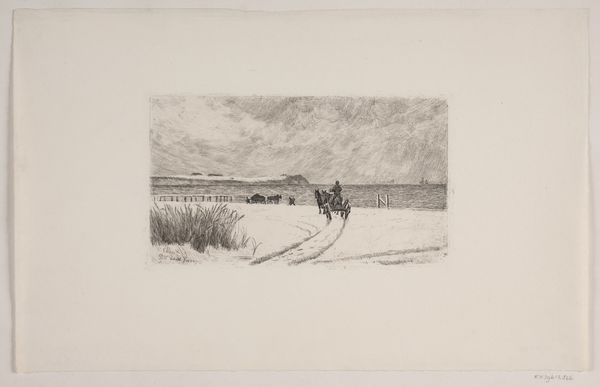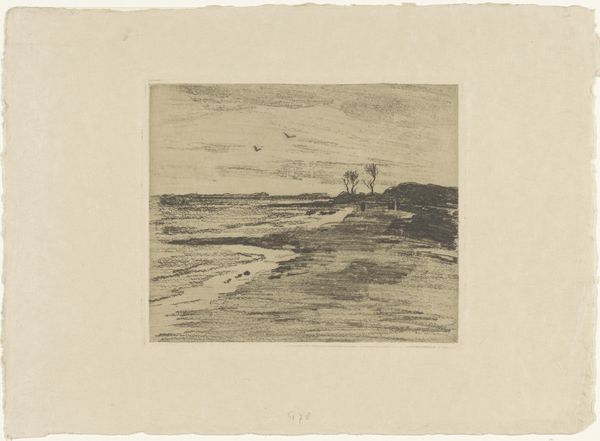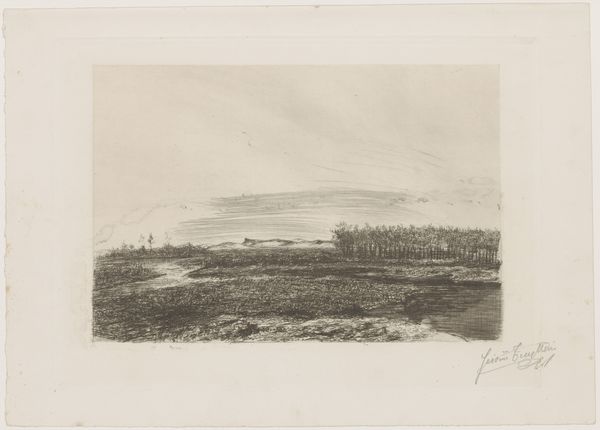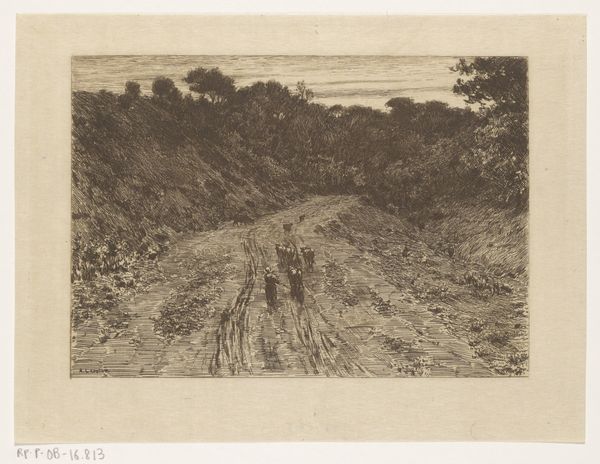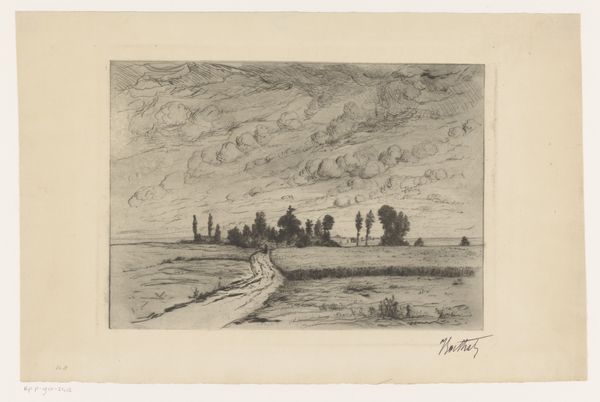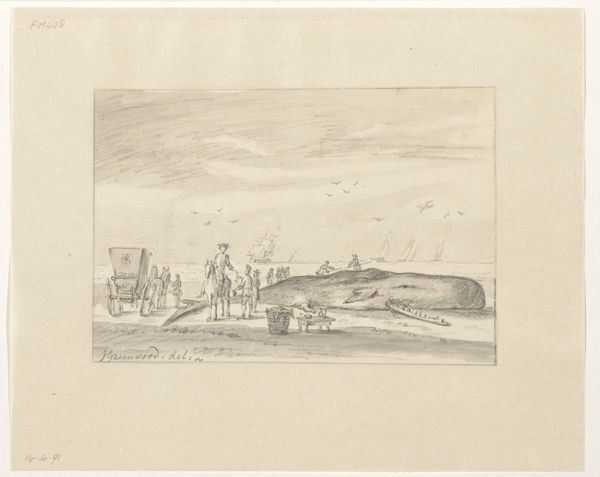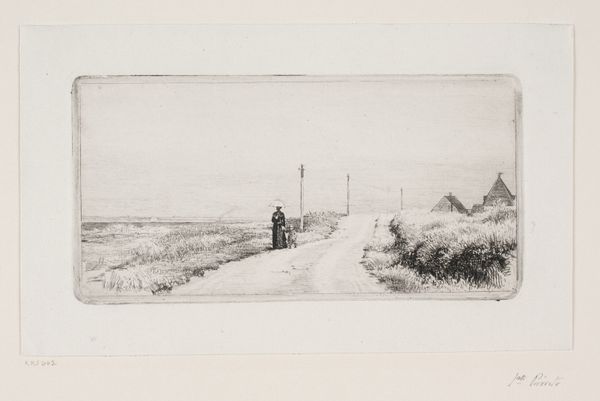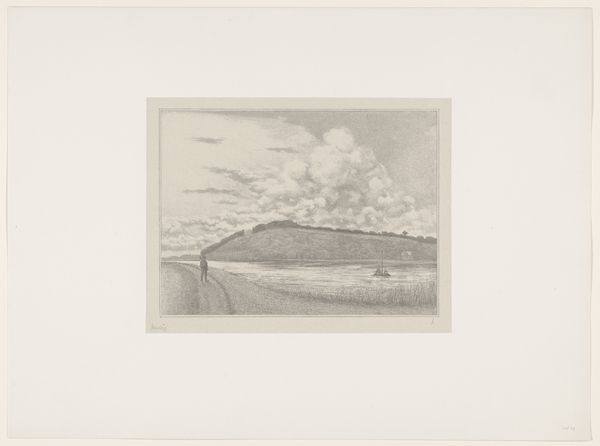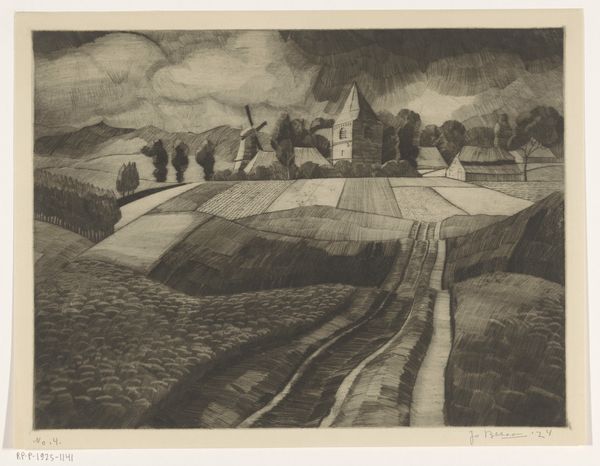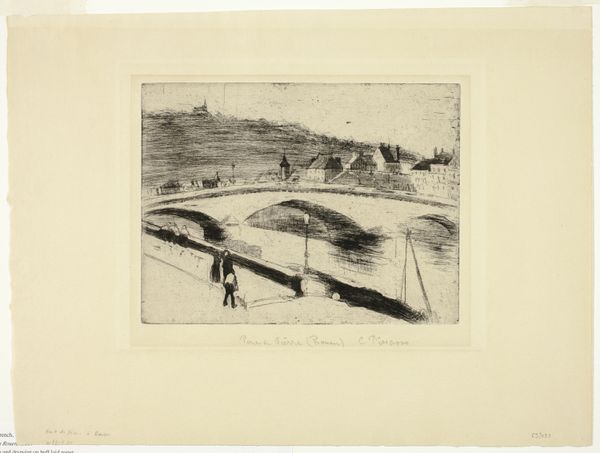
drawing, print, etching, paper, ink
#
drawing
# print
#
etching
#
pencil sketch
#
light coloured
#
landscape
#
paper
#
ink
#
sketchbook drawing
#
modernism
#
realism
Dimensions: height 327 mm, width 439 mm, height 409 mm, width 568 mm
Copyright: Rijks Museum: Open Domain
Curator: Right, let’s discuss "Dijk op Texel," a print created by Theo van Hoytema, likely sometime between 1913 and 1918. It’s a rather understated work, made with etching, ink, and pencil on paper. Editor: Understated is an understatement. It feels... melancholy. The lines are so sparse, almost tentative. There's a sense of vastness, but also isolation in this narrow path. Curator: It’s a potent depiction of the Dutch landscape and our complicated relationship with it, always battling and shaping the waters. Look at how that dike cuts through the flat expanse. It symbolizes our continuous effort to control our environment, but it also confines us. Editor: Yes, you can see that battle materially, with the varying texture of the lines; from the smooth path itself to the scratchy, almost frantic marks defining the edges and the land. Is it a fight, a collaboration, or a surrender with this land? Curator: It reflects a cultural imperative. Remember, in the early 20th century, land reclamation was central to Dutch identity and national progress. Artists were often enlisted to visually reinforce these endeavors. Editor: But unlike many grand depictions, here the reality is gritty. The marks reveal an intimate familiarity; yet simultaneously expose a disconnect with nature, making its conquest the very essence of our belonging. Even the composition, that strict perspective, feels like an imposition of order. Curator: That strict perspective, as you say, guides the viewer’s gaze along the dike. We become participants in this constructed reality. Editor: Well, ultimately I'm left with a feeling of subdued yearning. The etching's simple tools belie its complexity, echoing that same complex relationship with this land it depicts, between belonging and alienation. Curator: It gives us insight into not only our surroundings, but the social ambitions of the era it comes from. Van Hoytema quietly, powerfully captures that desire to manage and manipulate the natural world.
Comments
No comments
Be the first to comment and join the conversation on the ultimate creative platform.

